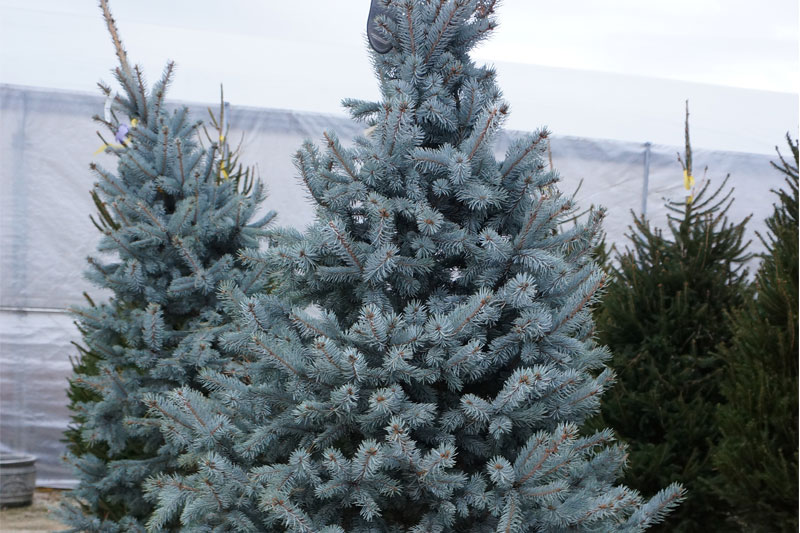

Grows slowly (12"+ per year) to 10-15' tall (typically 10' by 7' in 10 years). 'Fat Albert' is noted for its (a) dense, broad, upright pyramidal shape (a perfect cone), (b) closely-spaced, ascending branches and (c) steel blue needle color. Specific epithet means sharp-pointed in reference to the needles.

Genus name is reportedly derived from the Latin word pix meaning pitch in reference to the sticky resin typically found in spruce bark. From a horticultural standpoint, trees with blue or silver blue foliage are generally more coveted than trees with green foliage. Cylindrical light brown cones (to 4” long) have flexible scales. Stiff, bristly, four-angled, green to blue-green to silver-blue needles (to 1.5” long) point outward from the branches in all directions. It is native to the central Rocky Mountains from southern Montana and eastern Idaho south to New Mexico where it is typically found growing in moist locations from 6000 to 11000 feet in elevation. It typically grows 30-60’ tall in cultivation, but may reach 100’ or more where it grows naturally. Apply a fungicide with the active ingredient chlorothalonil for chemical control.Picea pungens, commonly called Colorado spruce (also blue spruce), is a medium to large, narrow, pyramidal conifer with horizontal branching to the ground. For control of needlecast disease, maintain moist, mulched soil. For weevil infestations, no control options are available other than pruning affected plant parts as maintenance. Opt instead for petroleum-based horticultural oils and plant-based oils such as neem, canola, or cottonseed oils. For more severe infestations, avoid harsh chemical pesticides, which often result in increased mite populations. Predatory mites can be purchased from garden supply retailers. Natural enemies are insects that kill mites without further damaging the desired tree. You can control spider mites by releasing natural enemies onto the tree. SolutionsĬare for spruce trees by controlling problems that arise.

Needles often drop, and the pests’ feeding may cause unsightly cankers, but the infestations do not diminish the tree’s health. Larvae eat tree roots, while adults chew foliage. Pine needle weevils display snouted faces and brown bodies measuring approximately 1/4-inch in length. Severe infestations may result in yellowed dots, leaf discoloration and defoliation. Spider mites often create silky webs on foliage. Though they are too small for the human eye to recognize any features, their movement is visible. Spider mites are tiny sucking bugs that feed on plant tissue fluid. Maintaining Colorado blue spruces includes monitoring for potential pest problems, such as spider mites or pine needle weevils.
PLANTING BLUE SPRUCE SAPLINGS FULL
The Colorado blue spruce tree, whose scientific name is Picea punguns, is a popular evergreen tree used by many homeowners throughout the United States as a landscaping tree.Īs known simply as the blue spruce, the Colorado blue spruce tree makes a great windbreak, screen, or border tree on your property because of its large height and width when full grown.


 0 kommentar(er)
0 kommentar(er)
